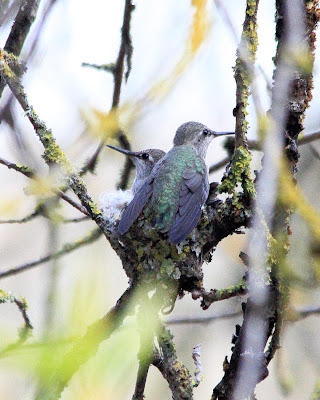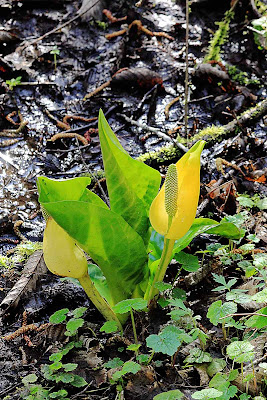This is a Dark-eyed Junco. There are a lot of them in Portland, and and we often see them hopping
around on the ground looking for seeds and insects to eat.
What is this one doing sitting on our car?
What is this one doing sitting on our car?
 |
This morning when we got out of our car this Junco hopped up
on the window and said, “Watch out! There are stranger Juncos around here and I
don’t like them.“
“In fact, there’s one right now!”
"Listen you, get out of here right now or I'll beat you up!"
Then the Junco attacked the strange bird in the mirror. He scratched and clawed but the other Junco wouldn’t go away!
Finally, the Junco started to yell at the strange bird. “Go away or I’ll scratch you some more.” But the other bird just did the same thing, scratching back at him.
And so the brave Junco attacked again! Scratching and clawing.
Finally he stopped and looked at the other bird. “You don’t look frightened or ready to run.”
“Maybe if I just turn my back on him he’ll go away.”
“All right, one last time. Go away or I’ll attack again,” he told the other bird.
And sure enough he scratched and clawed some more.
Finally, frustrated that this stranger wouldn’t leave, he said,“Okay, I won! I’m going to play with the other birds.”
Then the Junco attacked the strange bird in the mirror. He scratched and clawed but the other Junco wouldn’t go away!
Finally, the Junco started to yell at the strange bird. “Go away or I’ll scratch you some more.” But the other bird just did the same thing, scratching back at him.
And so the brave Junco attacked again! Scratching and clawing.
Finally he stopped and looked at the other bird. “You don’t look frightened or ready to run.”
“Maybe if I just turn my back on him he’ll go away.”
“All right, one last time. Go away or I’ll attack again,” he told the other bird.
And sure enough he scratched and clawed some more.
Finally, frustrated that this stranger wouldn’t leave, he said,“Okay, I won! I’m going to play with the other birds.”
So the Junco moved away. And, the other bird disappeared too!
Copyright 2013 Tom Nelson
All Rights Reserved
Please ask before you use my photos

























